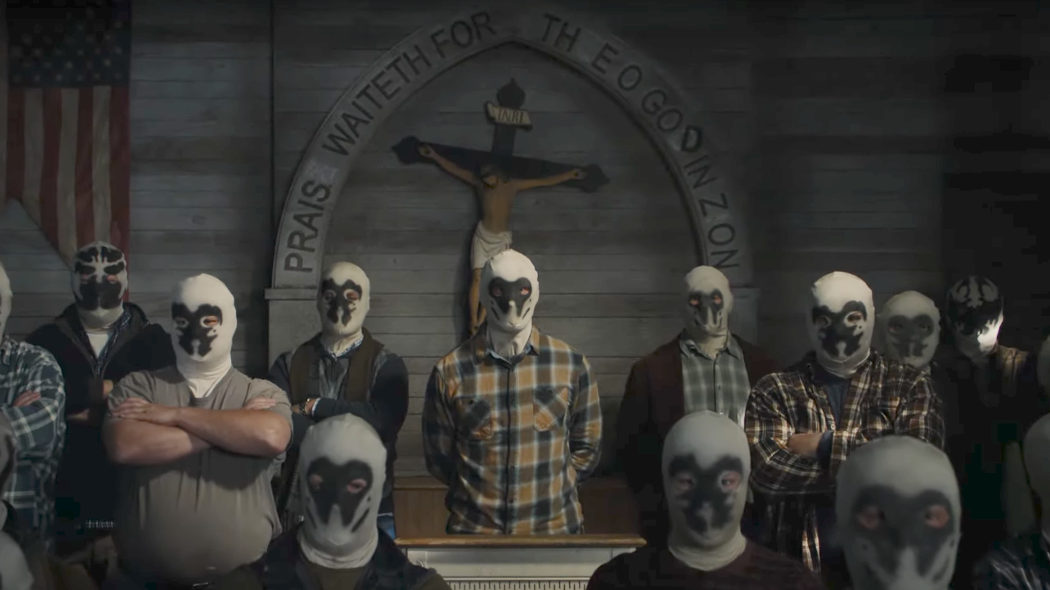“Watchmen” Shows Violence Behind American Hero Story

Published in 1986, Alan Moore’s “Watchmen” has since earned both critical acclaim — the sole graphic novel to make Time’s list of the 100 greatest American novels — and a fanbase devoted enough to support an uninspired series of prequels and a truly dreadful 2009 film. Fortunately, HBO’s new series takes a different path than these lifeless adaptations, and although it occasionally stumbles, it manages to refine and extend its predecessors’ criticisms of the superhero genre by exploring the role race has traditionally played in these stories. At the same time, its uniquely nonlinear storytelling and remarkable set of characters results in a gripping show.
The primary goal of the comics was to question America’s obsession with superhero stories. Set in an alternate 1980s, the story’s “heroes” are rarely heroic, running on 24/7 power trips and safely cloaked behind the anonymity provided by their masks; they tend to end up violence addicted narcissists at best. As a group, the superheroes, who for the most part lack actual superpowers and alternate between violent vigilantism and government cooperation, are largely responsible for winning the Vietnam War for the U.S. through crimes against humanity on an unbelievable scale and for propping up a five-term Richard Nixon presidency.
The fact that they are nonetheless worshipped by many in their universe — and that we worship Marvel’s slightly more sanitized versions of them in real life, pushing each new Marvel film to ridiculous new box office heights — is meant to be an alarming statement on how deeply violence and imperialism have ingrained themselves into the American psyche.The show — a sequel to the graphic novel set in the same alternate universe brought up to speed in the year 2019 — maintains the same critique of superheroes and the violent power imbalances they embody, but it also manages to bring its own ideas to the table and set the story in a context more relevant to modern audiences. The show’s most significant thematic additions revolve around race. What does it mean that throughout its long history, the idea of the superhero has been overwhelmingly white? How would the world react if that was no longer the case?
“Watchmen” opens with a chilling depiction of the 1921 Tulsa massacre, in which white rioters destroyed the wealthiest Black neighborhood in America, leaving dozens dead and as many as 10,000 homeless. The show immediately portrays the type of reactionary white backlash against any forms of Black power that recur throughout the show. As the show returns to the modern-day, the plot begins rolling through the lens of a conflict between a white supremacist organization, known as the Seventh Kavalry, and the Tulsa Police Force, which now includes a number of superheroes.
This conflict between cops and racists is at first the show’s most frustrating storyline, although it does not back down from displaying and criticizing police brutality, the narrative of a racially diverse group of police and superheroes abusing poor whites they suspect of Klan membership seems to spectacularly misrepresent the racial elements of real police brutality. Fortunately, there is more to this fight than there first appears, although it takes five episodes before it is exactly clear what is going on.
“Watchmen” excels is in its embrace of nonlinear storytelling. Flashbacks are frequent, and it isn’t exactly clear when certain scenes fall into place on the plot’s timeline; one major character spends almost his entire storyline on a distant moon before crashing back into the main narrative, and some of the best episodes zoom in on specific characters, flashing through their lives before returning to the present day. While all of this can be confusing, the moments when the puzzle pieces snap into place are some of the shows most satisfying. More importantly, the frequent journeys through time help establish each character and event in a firm context.
Built up via all of these cuts into the past, the characters of “Watchmen” are both individually compelling while also supporting the show’s major themes. A handful of characters from the comic return — the egotistical machiavellian Ozymandias (Jeremy Irons), the nearly omnipotent Dr. Manhattan (Yahya Abdul-Mateen II) and the cynical ex-superhero Laurie Blake (Jean Smart) — but new characters propel the plot forward. Particular standouts are Angela Abar (Regina King), the show’s protagonist and occasional moral compass, and her grandfather Will (Louis Gossett Jr.), a survivor of the Tulsa massacre who is revealed to have been the first superhero and to have very quickly entered murky moral territory.
Ultimately HBO’s “Watchmen” manages to use this vibrant cast of characters to extend the comic’s critique of the idea of the superhero in two ways. First, it reframes the superhero origin story by presenting the transformation from victim to superhero not as an uplifting narrative of empowerment, but as an inadequate and almost pitiful coping mechanism. As one character observes “wearing a mask doesn’t allow old wounds to heal, wounds need air.” Worse than just preventing personal growth, the adoption of violent vigilantism creates a vicious cycle as new victims are made. Secondly, the show argues that the traditional American superhero story is not just a glorified celebration of violence but also deeply racist, a refuge in which white heroes have both complete power and are portrayed as morally justified in their use of it, and where any acquisition of power by people of color is meant by swift backlash.





Comments ()